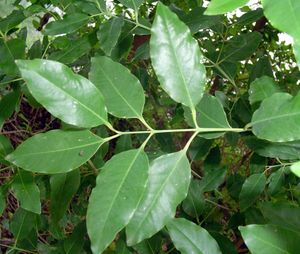Note: This is a project under development. The articles on this wiki are just being initiated and broadly incomplete. You can Help creating new pages.
Difference between revisions of "Santalum album - Sandal Wood, Chandana"
(→Photo Gallery) |
|||
| Line 61: | Line 61: | ||
<gallery class="left" caption="" widths="140px" heights="140px"> | <gallery class="left" caption="" widths="140px" heights="140px"> | ||
File:Sandalwood.jpg | File:Sandalwood.jpg | ||
| − | |||
File:Sandalwood harvest.jpg | File:Sandalwood harvest.jpg | ||
| − | |||
| − | |||
| − | |||
| − | |||
Sandal leaf.jpg | Sandal leaf.jpg | ||
| − | |||
| − | |||
SandalwoodEssOil.png | SandalwoodEssOil.png | ||
| − | |||
| − | |||
Santalum album (Chandan) in Hyderabad, AP W IMG 0023.jpg | Santalum album (Chandan) in Hyderabad, AP W IMG 0023.jpg | ||
| − | |||
| − | |||
Santalum album (Chandan) in Hyderabad, AP W IMG 0025.jpg | Santalum album (Chandan) in Hyderabad, AP W IMG 0025.jpg | ||
| − | |||
| − | |||
Santalum album (Chandan) in Hyderabad, AP W IMG 0027.jpg | Santalum album (Chandan) in Hyderabad, AP W IMG 0027.jpg | ||
| − | |||
| − | |||
</gallery> | </gallery> | ||
Revision as of 14:15, 16 January 2019
Sandalwood is the name of a class of woods from trees in the genus Santalum. Species of these slow-growing trees have suffered over-harvesting in the past century.
Contents
- 1 Uses
- 2 Parts Used
- 3 Chemical Composition
- 4 Common names
- 5 Properties
- 6 Habit
- 7 Identification
- 8 List of Ayurvedic medicine in which the herb is used
- 9 Where to get the saplings
- 10 Mode of Propagation
- 11 How to plant/cultivate
- 12 Commonly seen growing in areas
- 13 Photo Gallery
- 14 References
- 15 External Links
Uses
Skin diseases, Swelling, Itching, Eczemas, Acne, Bronchitis, Fever, Headache, Gastric problem, Chronic cough, Scabies, Gonorrhoea, Blood purifier.
Parts Used
Chemical Composition
Sandal wood oil contains mixture of two isomers α and β-santolol (90%), α and β-santalene, santalone, santanone, isovaleraldehvde, α and β-santalic acids[1]
Common names
| Language | Common name |
|---|---|
| Kannada | Agarugandha, bavanna |
| Hindi | Chandan |
| Malayalam | Chandanam, chandana-mutti |
| Tamil | Anukkam, Asam |
| Telugu | Bhadrasri |
| Marathi | NA |
| Gujarathi | NA |
| Punjabi | NA |
| Kashmiri | NA |
| Sanskrit | |
| English | Sandalwood, Indian sandalwood |
Properties
Reference: Dravya - Substance, Rasa - Taste, Guna - Qualities, Veerya - Potency, Vipaka - Post-digesion effect, Karma - Pharmacological activity, Prabhava - Therepeutics.
Dravya
Rasa
Tikta (Bitter), Madhura (Sweet)
Guna
Laghu (Light), Ruksha (Dry)
Veerya
Sheeta (clod)
Vipaka
Katu (Pungent)
Karma
Kapha, Pitta
Prabhava
Habit
Identification
Leaf
| Kind | Shape | Feature |
|---|---|---|
| Simple | oval | The oval leaves are thin, oppositely arranged. Smooth surface is shiny and bright green, with a glaucous pale Underside |
Flower
| Type | Size | Color and composition | Stamen | More information |
|---|---|---|---|---|
| Unisexual | 2-4cm long | Yellow or reddish | 5 | The flowers and wood of sandalwood are harvested for the plant’s fragrant essential oil |
Fruit
| Type | Size | Mass | Appearance | Seeds | More information |
|---|---|---|---|---|---|
| Simple | 7–10 cm | Fruit is produced after three years | five | {{{6}}} |
Other features
List of Ayurvedic medicine in which the herb is used
- Vishatinduka Taila as root juice extract
Where to get the saplings
Mode of Propagation
How to plant/cultivate
If you are planning for the sandalwood tree cultivation then you may require well-drained soils which have a good organic object. The red sandy loam soils are also suitable for the sandalwood tree and you get the high yield crop.[3]
Commonly seen growing in areas
Stony hills area, Stony meadows
Photo Gallery
References
External Links
- Ayurvedic Herbs known to be helpful to treat Skin diseases
- Ayurvedic Herbs known to be helpful to treat Swelling
- Ayurvedic Herbs known to be helpful to treat Itching
- Ayurvedic Herbs known to be helpful to treat Eczemas
- Ayurvedic Herbs known to be helpful to treat Acne
- Ayurvedic Herbs known to be helpful to treat Bronchitis
- Ayurvedic Herbs known to be helpful to treat Fever
- Ayurvedic Herbs known to be helpful to treat Headache
- Ayurvedic Herbs known to be helpful to treat Gastric problem
- Ayurvedic Herbs known to be helpful to treat Chronic cough
- Ayurvedic Herbs known to be helpful to treat Scabies
- Ayurvedic Herbs known to be helpful to treat Gonorrhoea
- Ayurvedic Herbs known to be helpful to treat Blood purifier
- Herbs with Leaves used in medicine
- Herbs with Stems used in medicine
- Herbs with common name in Kannada
- Herbs with common name in Hindi
- Herbs with common name in Malayalam
- Herbs with common name in Tamil
- Herbs with common name in Telugu
- Herbs with common name in English
- Habit - Tree
- Index of Plants which can be propagated by Seeds
- Index of Plants which can be propagated by Cuttings
- Herbs that are commonly seen in the region of Stony hills area
- Herbs that are commonly seen in the region of Stony meadows
- Herbs







